Why these companies relied on staff – not consultants – to transform IT
Endeavour Energy and Superloop have pulled off complicated digital upgrades by relying on employees who understand customers and know the ins and outs of their businesses.
ASX-listed telco and internet provider Superloop and NSW electricity distributor Endeavour Energy have both been able to pull off complicated digital upgrades – and keep the improvements coming – by relying heavily on internal IT staff who know their customers and the business, rather than having external consultants take control.
Software developers at the highly acquisitive Superloop, which is based in Brisbane, have integrated new companies into its existing system, redeveloped its main IT platform and carried out the difficult task of shutting down legacy computer systems.
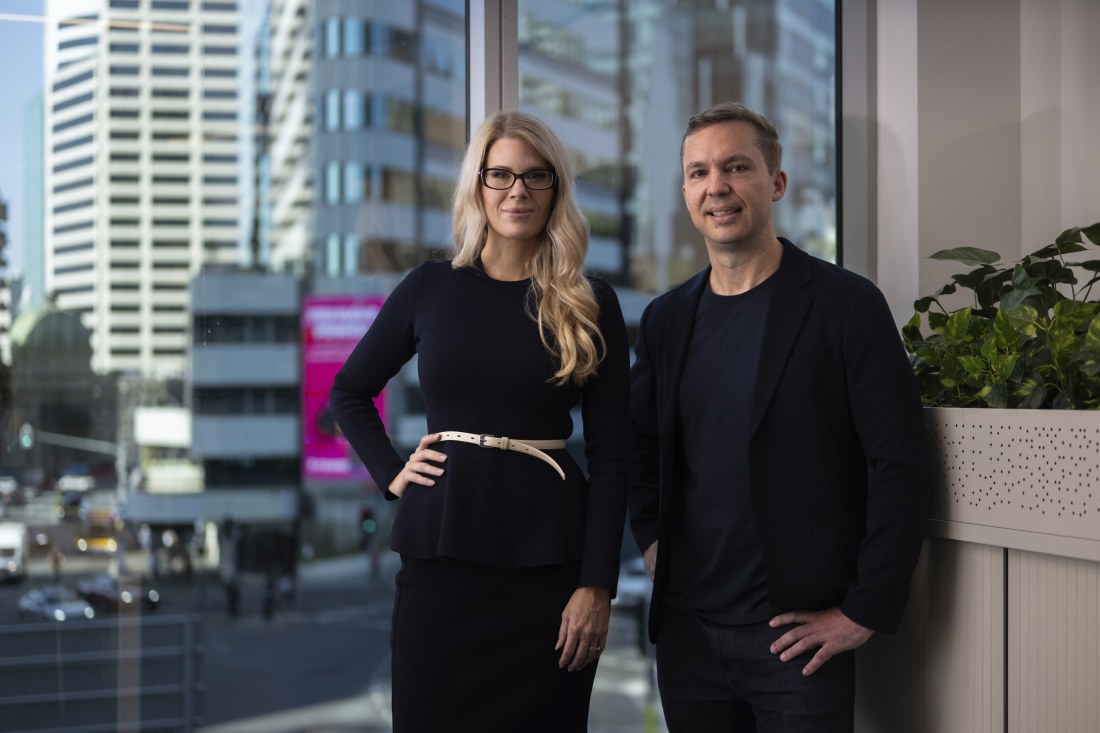
Daisey Stampfer, the group executive of strategy and transformation at Superloop, and Reid Elliot, the head of transformation. Dan Peled
“Our people know these systems inside out,” says Daisey Stampfer, the group executive of strategy and transformation at Superloop. “In fact, they built them right from the ground up. So, when it comes to change, as long as you can get their mindset right ... they can do really powerful things.”
Stampfer says the company’s system consolidation, now in year two of a three-year program, resolved what had become a “spaghetti tree” of overlapping systems. That sometimes involved asking long-serving staff to shut down a system they had built.
“You’ve got to help [staff] on the journey to get to that point where they see the benefit ... [when] you’re asking them to decommission their own platform,” she says. “That’s a really tough thing to get your head around. But if you can do that, you actually end up in a much better position at reset because they’re doing the work.”
Superloop’s staff have consolidated seven ticketing systems into a single Salesforce ticketing solution, four customer relationship management systems into one, and three finance systems into one.
“It’s about creating that clean [technology] stack, so then bring those [acquired] businesses in and get the synergies day one,” Stampfer says.
The IT success that comes from relying on internal staff, with selective help from external consultants and external computer system integrators, explains why Superloop and Endeavour Energy were selected as industry sector winners in the inaugural AFR Digital Transformation Leaders Awards, announced last week.
Reid Elliott, Superloop’s head of transformation, says the company’s staff did most of the work, and IT consultants completed the required one-off technical work.
Staff ‘know our customers, know our business’
“I have been pleasantly surprised how much we’ve been able to do with internal resources,” says Elliott, a former big four consultant. “We have had only very targeted, limited external help.”
He says the key advantage of retaining and building internal skills is the “people doing the work know our customers, and they know our business”.
“As a proud ex-consultant, I’ve been constructively challenged many times by our people, [who say] ‘you’re going to make that PowerPoint, who’s going to read that?’... Here, we are able to work together very quickly to make real changes in our systems to clean up [the] data and build things better for our customers.”
Stampfer says the company also allocated $5 million to consolidate the computer system.
“That was a big investment for a company of our size because, obviously, you can bank the benefits of other things, or you could spend your money and go and do something like this,” she says. “And we took the latter approach.”
26 legacy systems into one
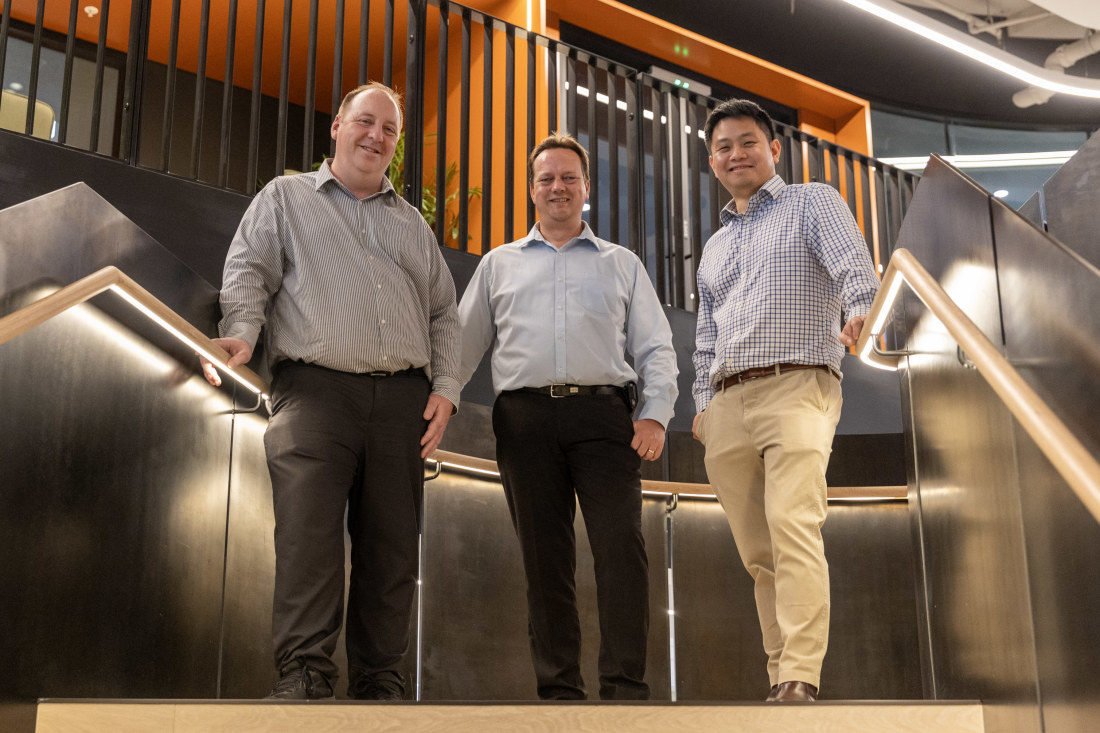
From left: Endeavour Energy’s technology architecture and engagement manager Richard Walsh, head of technology Rudi Reynierse and head of system operations Edmund Li.
Endeavour Energy has also gone through a massive system overhaul that led to 26 legacy systems being replaced by a SAP system that supports the main functions of finance, asset management, field force mobility and customer billing.
Rudi Reynierse, Endeavour’s head of technology, says the SAP integration involved “a large team of people from the business itself that were seconded onto this project”.
“The idea was that the thought leadership around the process development would happen from within the business because we know how our business works the best,” Reynierse says. “And then the hard lifting of actually turning that into code or configuration within SAP was done by experts that we got in from [the system integrators].”
The company used “various system integrators” depending on the release and the skills of each provider. Like Superloop, the external experts were mainly used to configure the SAP software to the needs of the business, with the three-year program broken into four releases.
Richard Walsh, Endeavour’s technology architecture and engagement manager, says “99 per cent” of the legacy systems have been shut down, with a few allowed to remain for archiving purposes.
Walsh says relying mainly on internal staff also avoids the problem of system integrators imposing their way of working on a client.
“Some SIs have a very set way of working, [they have] set ideas they bring in from other industry models,” he says. “And there’s pros and cons to that because you can say, ‘this is what works over there, should work for here’. But the reality is sometimes the business might be a bit different ... so you need to take them as inputs, but [you] still need to own your own destiny.”
Edmund TadrosProfessional services editorEdmund Tadros leads our coverage of the professional services sector. He is based in our Sydney newsroom. Connect with Edmund on Twitter. Email Edmund at edmundtadros@afr.com.au
The playbook to ensure digital transformation works
This article is part of the Digital Transformation Leaders List, presented in conjunction with BCG, published 13 September 2023.
The leaders at ASX-listed Superloop have developed what amounts to a digital playbook to manage the company’s ongoing acquisition spree.
The telco infrastructure outfit, which provides internet services to about 370,000 retail, business and wholesale customers, has made three major acquisitions since 2020.
They include the $34 million purchase of high-speed fibre-to-the-premises supplier VostroNet, and an active offer to buy cloud communications provider Symbio for $243 million.
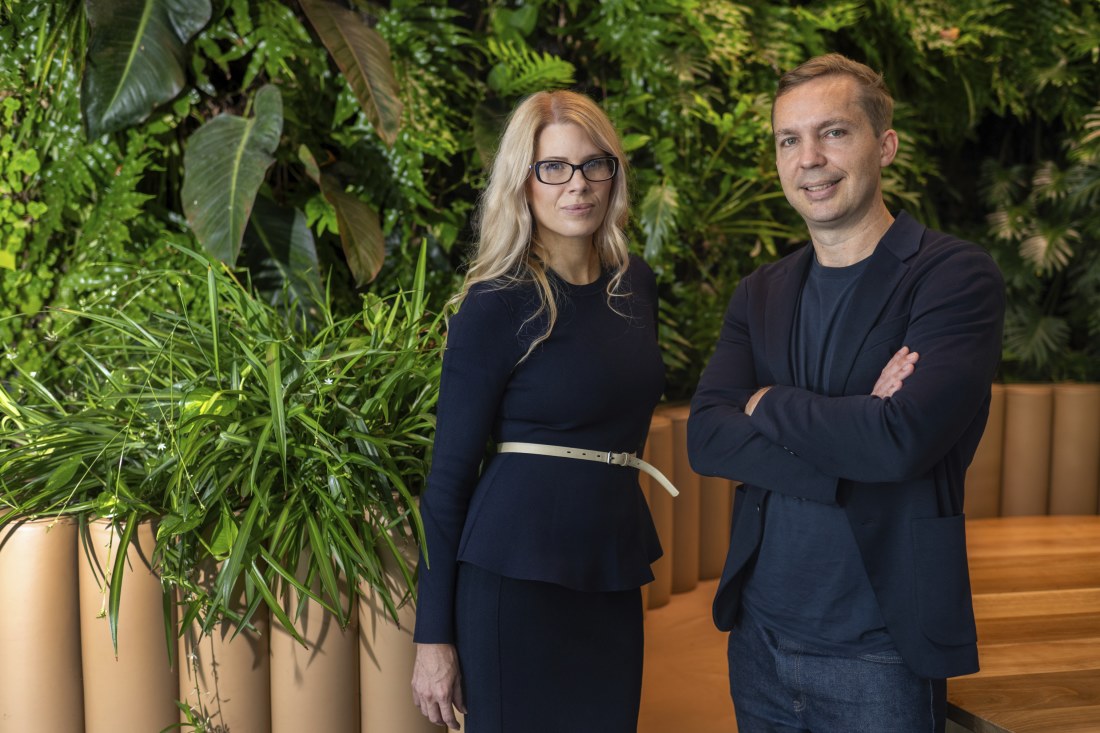
Daisey Stampfer, the group executive of strategy and transformation at Superloop, and Reid Elliot, the head of transformation. Dan Peled
Each acquisition has brought with it a range of computer systems, databases and processes that have to be meshed into Superloop’s existing operations. Aside from standard financial and strategic considerations, the playbook is designed to ensure a clear path to integrating systems of acquired outfits into Superloop’s central computer stack.
The company has devised an internally built system that automatically provides new National Broadband Network services as quickly as 10 minutes and the “My Speed Boost” product which allows customers to temporarily increase internet speeds.
Award winners and ones to watch
The systematic approach to integrating acquisitions was a reason Superloop was crowned one of five industry sector winners in the inaugural AFR Digital Transformation Leaders Awards.
“We literally went from paper drawings of our network and people putting pins in where there were problems, and having two control rooms that didn’t even know what each other’s status were most times, to a fully digital system where the guys in the field now have iPads where they can actually interact with the grid in real time,” says Rudi Reynierse, Endeavour’s head of technology.
A panel of BCG experts assessed more than 100 entries using the firm’s Digital Transformation Key Success Factors approach. The areas judged include assessing the commitment of leaders to the change, looking at how integrated the company’s strategy is with its digital goals, and evaluating how effectively technology changes are monitored.
The judging process resulted in five winners and five leaders across five industry categories. Four companies were also identified as “ones to watch” for their digital efforts.
Committed leadership
Reid Elliott, Superloop’s head of transformation, says that senior leadership at the company has empowered staff to “take sensible risks, rather than avoiding risk” when it comes to resolving customer issues.
“[That] has allowed people to feel safe and trusted to do the right thing by customers, and that’s created a really positive culture where people are customer focused,” Elliott says.
“Everyone wants the internet to just work, but if something goes wrong, as things inevitably will with technology, people realise that and rally together. [There] is no culture of blame and shame, it’s ‘how can we fix this together for the customer’.”
This culture of managed risk-taking, which has to come from the top, can also be seen in its acquisition playbook and the company’s $5 million system consolidation project, says Daisey Stampfer, the group executive of strategy and transformation of at Superloop.
“We use the playbook when we’re in DD [due dilligence],” she says. “We actually look at how we’re going to integrate through DD. We plan it there and then once we’ve completed the transaction and we’re integrating, we’ve got a clear plan for how we’re going to do that.”
The playbook is a new development at the acquisitive company, while the system consolidation, now in year two of a three-year program, was designed to resolve what she calls the previous “spaghetti tree” of overlapping systems.
“So for the roughly one dozen acquisitions prior to my time [she began in March 2021], it was a mess,” says Stampfer. “But we know that we’re acquisitive.
The winners are: Superloop (in the technology, media and telecommunications category), engineering consulting company Aurecon (professional services, engineering and advisory), NSW electricity distributor Endeavour Energy (resources, energy and utilities), fintech Airwallex (banking, superannuation and financial services), and retailer RM Williams (retail, hospitality, tourism and entertainment).
The runners-up in each sector are: pay compliance company PaidRight, freight forwarder Explorate, petroleum exploration and production company Woodside Energy, life insurance company Resolution Life, and bowling alleys and mini golf company Funlab.
The judging panel also named four companies as “ones to watch”: bid management software firm Bidhive, telco Swoop Telecommunications, recruiter Hudson Global Resources, and pathology company Healius.
Major factors linking the five category winners were top management support and funding for digital initiatives; a strong focus on hiring, retaining and developing personnel with technology skills; and the ongoing digitisation and automation of processes previously carried out manually.
That digitisation of processes is best illustrated by Endeavour Energy’s two-year long project to build its Advanced Distribution Management System. It is a digitised version of the company’s outage management system that provides real-time remote control and visibility of thousands of assets spread over hundreds of kilometres.
Award winners and ones to watch
The systematic approach to integrating acquisitions was a reason Superloop was crowned one of five industry sector winners in the inaugural AFR Digital Transformation Leaders Awards.
The awards, compiled in association with Boston Consulting Group, are designed to identify Australian companies that have successfully overhauled their technology stack and continue to improve their digital operations.At Aurecon, the commitment to developing internal skills also came from the top with a push for staff to develop digital skills, says Dave Mackenzie, the engineering consulting firm’s managing principal of digital.
“The big ticket item was standing up our digital network, and defining and creating our digital practice ... that’s a network of senior positions across the organisation that sit regionally ... they are really a catalyst for change in the organisation,” Mackenzie says.
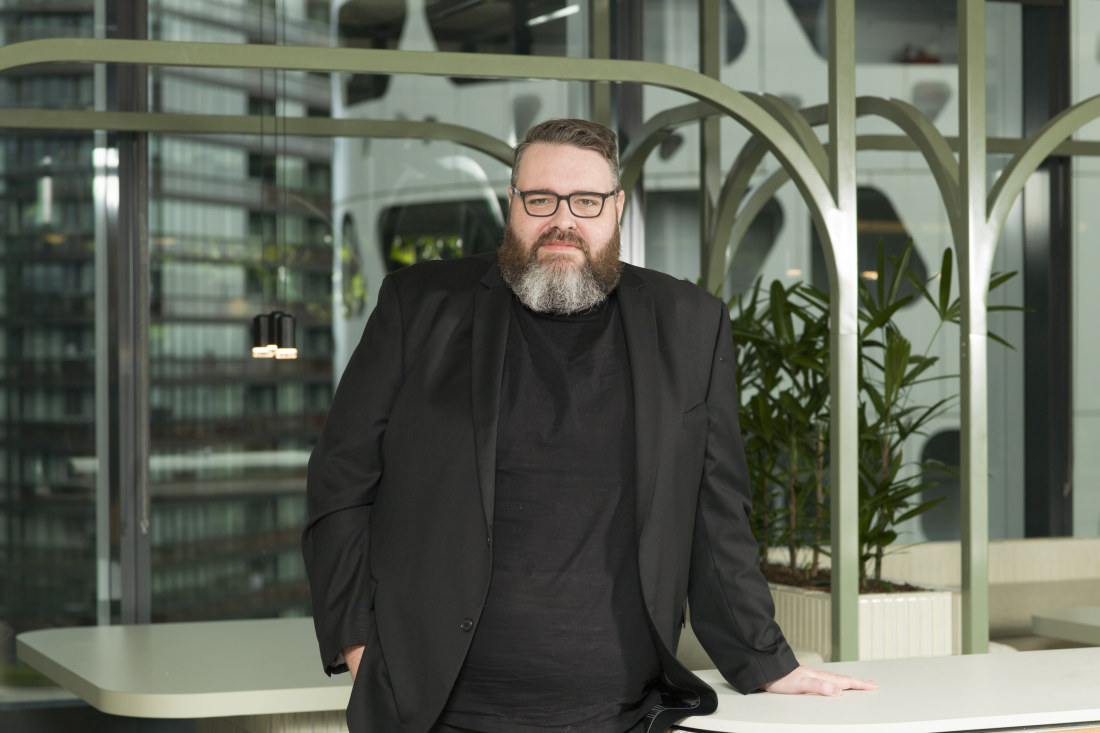
Dave Mackenzie, the managing principal for digital at Aurecon. Elke Meitze
The initial goal was to equip about half of the firm’s 7000-strong staff with digital skills, a feat which was achieved in the first 24 months. Aurecon’s leaders now want all staff to have core digital competencies, such as computational design, data and analytics, and digital modelling.
“We [are] talking about the digital skills that were required for our future ways of working in digital practice,” Mackenzie says.
The company’s staff have also developed the Aurecon Project Information Management Standard, a system for engineering projects based on the firm’s common standards.
The projects within the system can contain “gigabytes to terabytes” of data such as spatial information, aerial photography and engineering drawings, along with the relevant metadata to make it all “searchable and indexable,” he says.
”What we do see now is as we’ve got more and more structured data, we’re able to do things with that,” he says . “We’re able to pull together project reporting and dashboards that wouldn’t have happened beforehand, it really is about unlocking the potential of generative AI and other advanced technologies.”
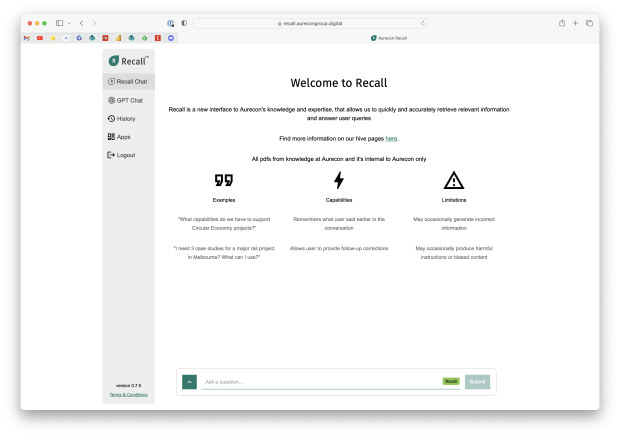
Screen-shot of Aurecon’s generative AI tool Recall.
The firm is already using generative AI, piloting the technology in two tools: Recall which allows users to retrieve Aurecon-specific information from the firm’s knowledge database, and WinWise which helps bidding teams quickly to process and generate key information from requests for proposals or tenders.
Separately, Aurecon has also formed a Digital Products and Services Group to integrate digital products into its services and commercialise the digital skills of staff such as visualisation and data analytics.